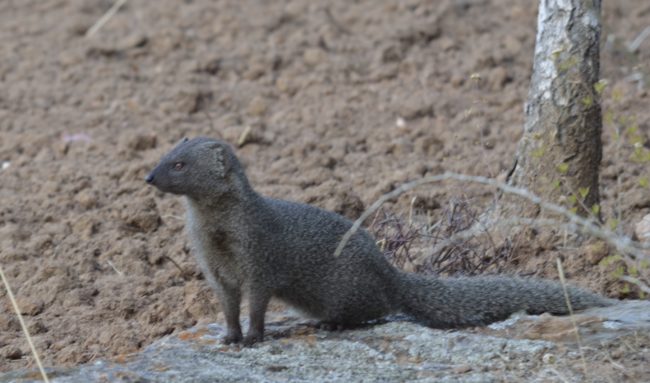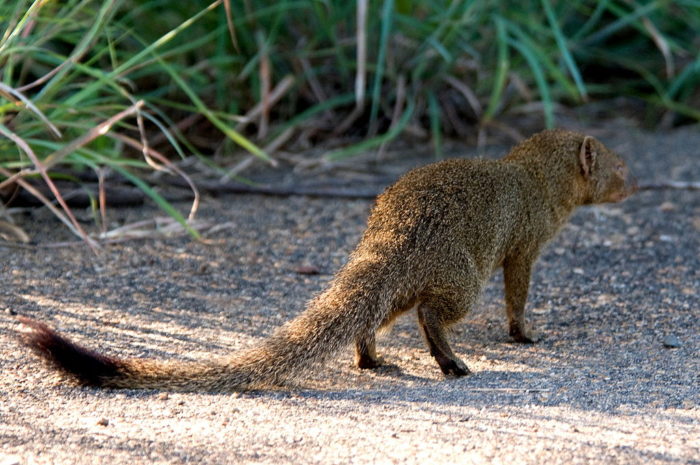You know you have seen a mongoose on your smallholding if you have seen a short-legged animal with a pointed nose, small ears, and a noticeably long furry tail. The fur is grey to brown or reddish brown and is sometimes flecked with lighter grey.
There are fourteen species of mongoose in southern Africa. The most common are the Cape Grey, the Dwarf, the Banded and the Slender Mongoose.
Cape Grey Mongoose
According to SANBI, the Cape Grey Mongoose is widely distributed, ranging from southern Namibia to the Northern Cape, Western Cape, Eastern Cape and southern Free State, Northern Lesotho and in the western KwaZulu-Natal into southern Mpumalanga.

It is small species that grows 55-75cm long and weighs 0.5-1.2kg. Their long, slender body is speckled dark grey with a long bushy tail of up to 20-34cm long. It only comes out at night.
Have you seen a Slender Mongoose on your smallholding?
However, you might have seen a lithe, light brown or dark red-brown little creature on your smallholding. If it has a long, black-tipped tail it is probably a Slender Mongoose (Galerella sanguinea).
This species is found in the central and north-eastern regions of the country.
The body ranges from 27.5–40 cm in length, the tail can be up to 33cm long and the average size of these animals is between 640 and 715g in weight.
It inhabits open woodland savannah, within which it favours more heavily wooded areas.
They establish dens in disused termitaria, rock crevices, holes in the ground and hollow trees. They also like koppies.

These small carnivores are very adaptive to most temperatures, climates, rain patterns and humidity levels. They live in a diverse range of habitats and regions throughout their distribution range in Africa, wherever food is readily and consistently available.
The Slender Mongoose feeds primarily on grasshoppers, rodents, snakes, birds, lizards and termites. Unfortunately, they do eat eggs and chicks, so if you have one on your smallholding, you need to ensure that they can’t get into your hen house.
It is a year-round breeder, but births occur more often in the rainy season. They have a gestation period of eight to nine weeks and deliver one or two litters per year, each consisting of between one and three young.
Mongoose habits
This species is diurnal, so if you see a mongoose during the day it is likely to be a Slender Mongoose. Most of the other mongooses only come out at night.
They are solitary creatures and both male and female will each have their own territory. In the wild, the male territory can cover half a square kilometre and it will overlap the territories of probably two females. These females mate with the male whose territory overlaps with theirs.
The mongoose is well known for its ability to fight and kill venomous snakes. It is adept at such tasks due to its ability to move quickly and its thick coat. It also has specialised acetylcholine receptors that render it resistant to snake venom.
If you do have one on your plot try to ensure that your domestic animals do not engage with it, because mongooses are often carriers of rabies.
To read more about the wildlife found on small farms and smallholdings click here.
To subscribe to SA Smallholder click here.

